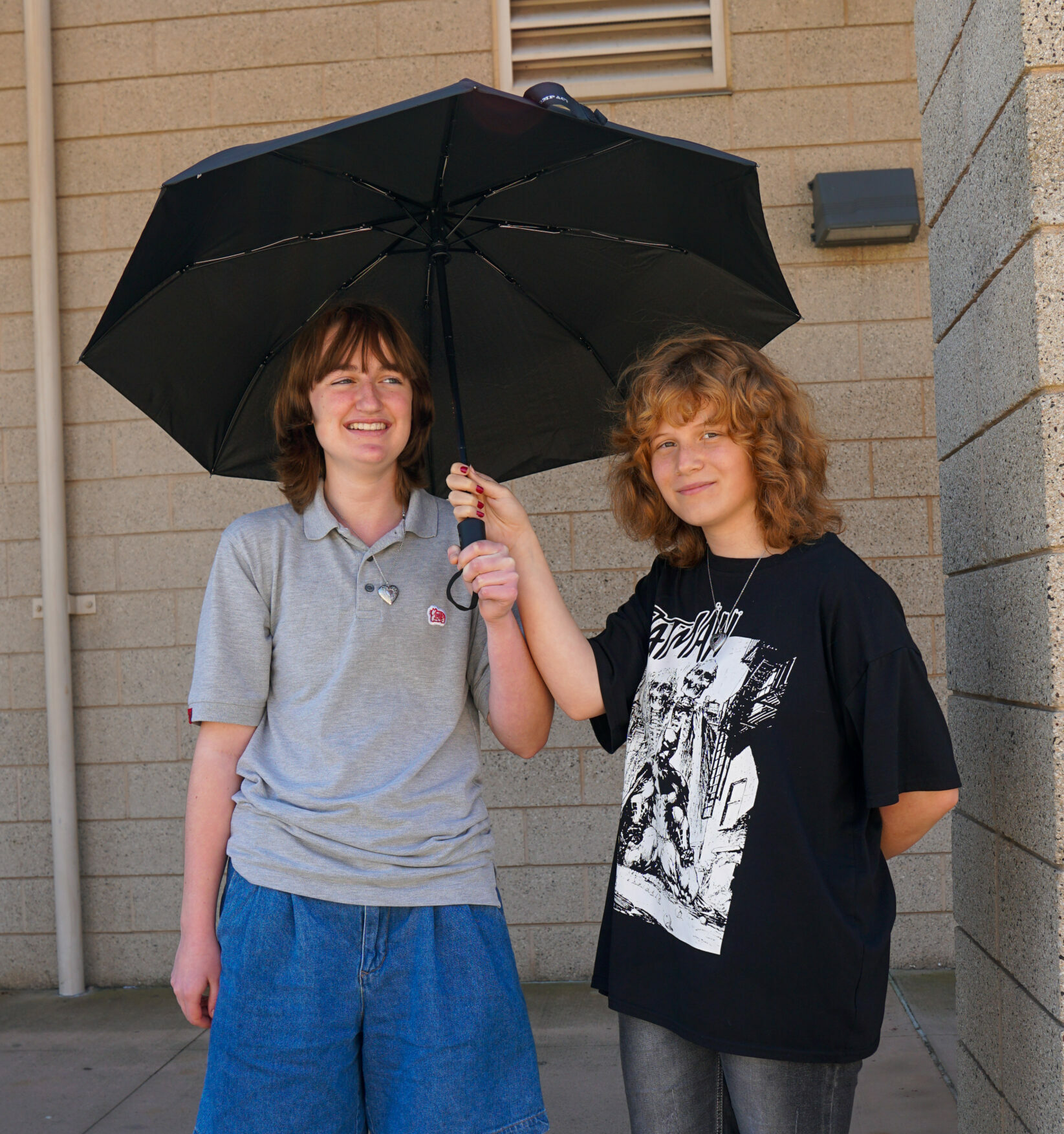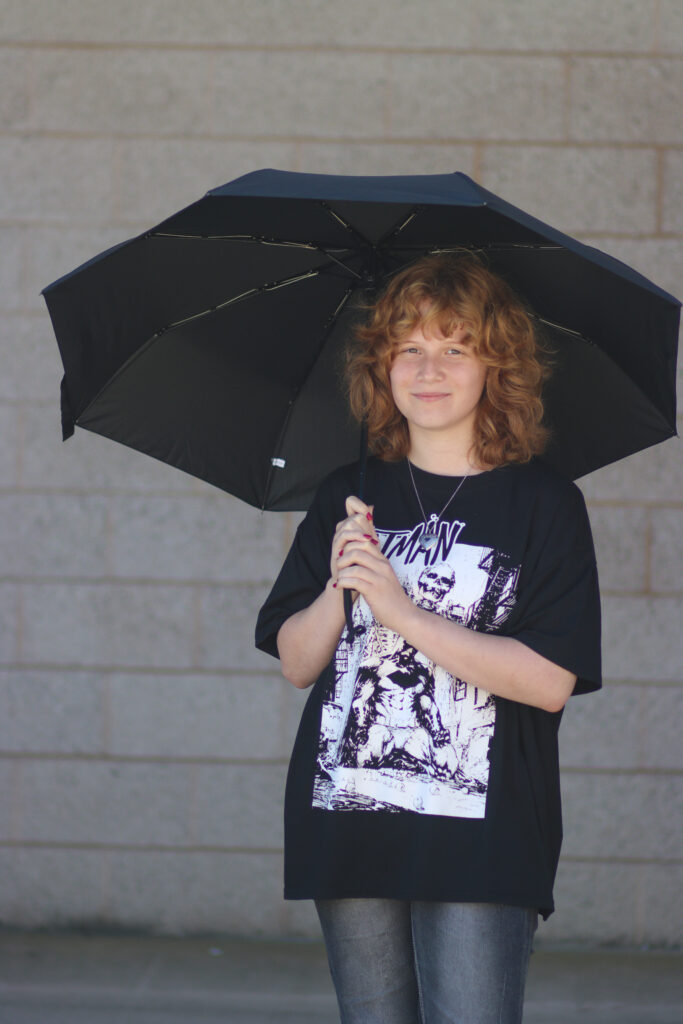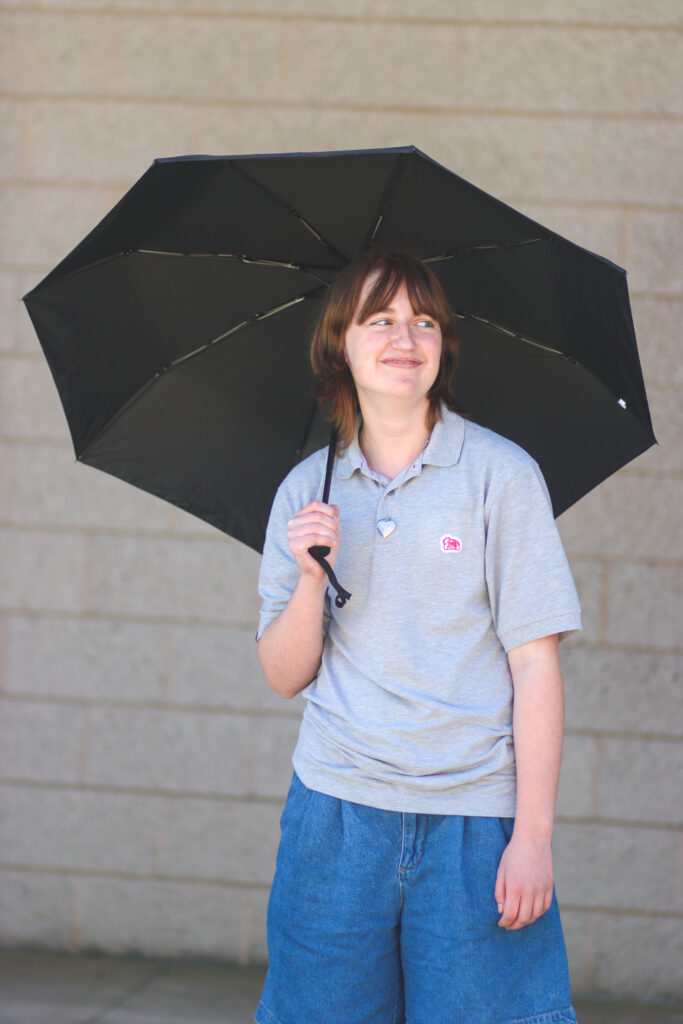
Under the Umbrella
For Stanley McInnis (10), a highlight of his time in middle school was making the boys’ basketball team. For any other kid, this may have been just another achievement, but for McInnis, it was special — it was the first boys’ sports team he had joined since identifying as a male.
McInnis is one student at TPHS who falls under the transgender umbrella, a group that includes, but is not limited to those transitioning from male to female, from female to male and from male or female to nonbinary. Whether their peers are aware of them or not, these students sit in the same classes, get the same school lunch and walk through the same hallways.



McInnis’s journey toward exploring his gender began when he was 11 and 12-years-old.
“At the earliest stages, I experimented with non-binary as a label because I was still figuring out how I wanted to be perceived, and I wasn’t exactly sure [of myself],” McInnis said. “Then around 13 was when I was like, ‘Okay, I’m a boy.’ I feel like a guy and I want to be perceived as such, so I’m going to tell people to refer to me as such.”
For Sadie Brecheen (9), the nonbinary label stuck during this exploratory phase.
“I just noticed that every single time I felt uncomfortable with being called a girl, I was always thinking, ‘What if I feel like a boy?’ but [I thought], ‘I don’t feel like that at all,’” Brecheen said. “So [it was] back and forth until I landed on, ‘Maybe it’s between.’”
However, not everyone is fully open about being transgender; some prefer to be perceived as cisgender.
John Doe (name changed for privacy reasons) intentionally keeps their transgender identity private.
“I have spent a lot of my life trying to be as normal as possible … I can’t really tell anyone because I am going [to be] seen differently, and I just wish that people treated trans people the same as they would someone who was cisgendered,” Doe said.
A person’s willingness to be open about their identity stems in part from perceptions of tolerance in their community. The perception of transgender acceptance at TPHS varies among individuals.
“I’ve observed a lot of people at this school, and in the majority, I’d say there’s not a good tolerance or acceptance rate of trans people,” said Will Clay (name changed for privacy reasons). “I might be biased because … I can’t see everybody and I don’t really know everyone’s true opinion, but from the words I hear in the hallways or at lunch … it’s like, ‘Yikes, I didn’t know you had that strong of an opinion.’”
Doe shared a different perspective, citing experiences in physical education classes when they were allowed to change in the nurse’s office, rather than a gendered gym bathroom.
“Honestly, people are surprisingly chill here,” Doe said. “I’ve definitely heard some questionable things from people, but it’s not too bad.”
Regardless of how open one is in their exploration of gender identity, the transition phase can be a difficult process.
“For a long time, I was like, ‘There’s no way I’m trans because it’s so rare, and it’s not possible and it’s just not something that I ever imagined. And so I kind of wrote it off for a long time,’” Dan Smith (name changed for privacy reasons) said. “And then I realized, ‘Oh, no, that’s your path.’”
For Smith, “the choice is not to be trans; the choice is to transition.”
For many, supportive friends were key to making them feel safe during their transitions.
“I think it was finding people who accepted me, and to be honest, I had to change friend groups because … not everyone was a big fan of [my transition],” Nicole Brown (11) said.
For others, family was this support.
“I didn’t formally ever come out to my family. I just started going by Stanley at school and I told [my teachers] my pronouns,” McInnis said. “I think my parents just caught on eventually. I never had a sit-down conversation with them, but they’re supportive, so that wasn’t really a struggle.”
When there is no one around to look to for support, affirmation can even come from oneself. “I’ll look in the mirror and be like, ‘You look good today, you’re transforming into something that you want to be,’”
Cooper Trey (name changed for privacy reasons) said. “I’m being the vision that I’ve always wanted to be and it makes me happy.”
Transitioning is not a linear path for many; some days, you just don’t make the boys basketball team.
Many transgender individuals experience gender dysphoria – the distress that stems from one’s gender identity not matching their gender assigned at birth.
“It’s more about being jealous of not having anatomically different characteristics, or feeling self-conscious about the fact that I wasn’t born the right way,” Brown said.
Charlie Miller (name changed for privacy reasons), an individual who identifies as genderqueer, felt this way from a young age.
“I was in eighth grade. I was at a shopping mall with some friends after a show. And I remember looking in a window [at] myreflection, [and] it just didn’t feel right,” Miller said. “I was wearing a high ponytail and a crop shirt, and I just felt gross.”
Smith shared this discomfort with mirrors, although in a different way.
“For some reason, it felt like when I looked in the mirror, I wasn’t there. It always kind of felt like I was watching my life from above,” Smith said. “And I [thought], ‘how do I connect with my body and how do I put myself back into my physical self?’”
But the experience of transitioning or of gender exploration is not one solely defined by dysphoria.
“Personally, I get gender euphoria when I just exist … and I am seen as a cisgender male and treated as one, it just makes me feel very giddy and happy inside,” Doe said.
Clay shared a similar feeling of joy.
“To me, trans joy is the togetherness of people who are so beaten down by others, but can come together as a community and just enjoy that they’re a little different but still the same compared to everyone else,” Clay said.
Wherever an individual stands under the transgender umbrella — whether they be exploring their gender identity, preparing to transition or walking onto the court for their first game on a team that affirms their true self — transgender students “still experience the world through a normal lens,“ according to McInnis.
“I’m still a person with feelings. I didn’t just become weird the moment I realized that I wasn’t cisgender,” McInnis said. “It’s just one aspect of myself that isn’t like the norm.”
Photos by Anna Opalsky/Falconer and Hope Dennis/Falconer

